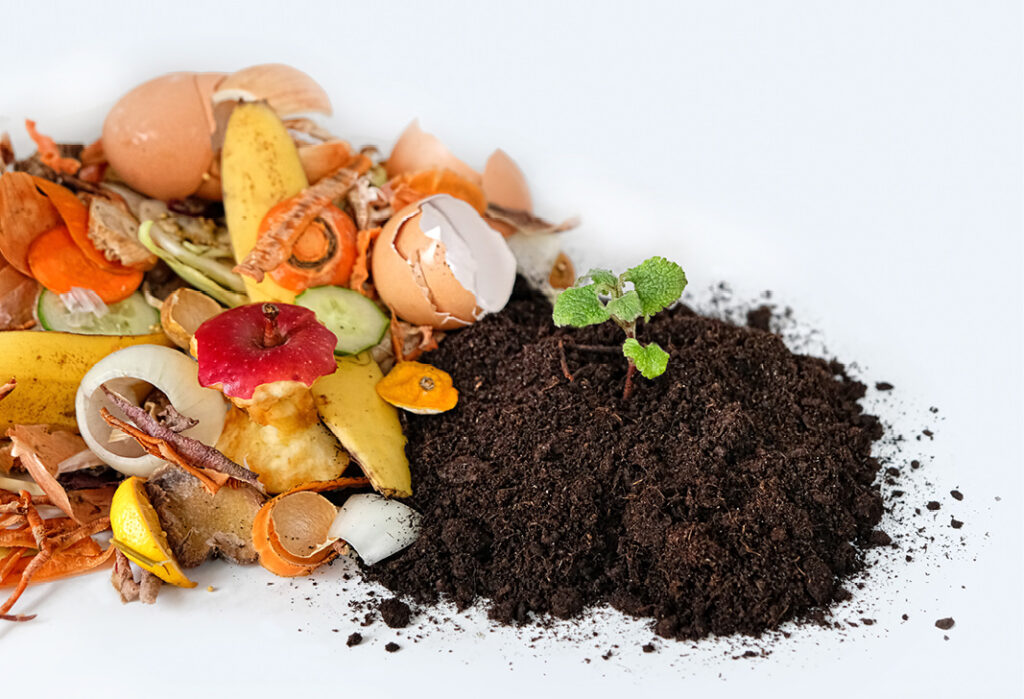

Trash Talk: The Landfill Food Waste Problem
According to the U.S Environmental Protection Agency (EPA), in the United States, food is the single largest category of material placed in municipal landfills, where it rots and emits methane. Methane is one of the most threatening greenhouse gases with more than 80 times the warming power of carbon dioxide. Due to its quick decay rate, food waste in landfills is contributing to more methane emissions than any other landfilled materials.
This waste, in the U.S. alone, causes greenhouse gas emissions equivalent to those of more than 50 million gas-powered passenger vehicles, or the annual emissions of 15 coal-fired power plants. World Wide Fund for Nature (WWF) explain that when we waste food, we also waste all the energy and water it takes to grow, harvest, transport and package it.
Food loss and waste, described by United Nations (UN), as an ethical outrage, present some alarming statistics:
What does “thrown away” mean? There is no “away.” Trash is moved from household garbage bins to a much bigger garbage space, landfill. This is the historic solution for waste that can’t be reused or repurposed in any way.

When food is left to decay in landfills, the absence of oxygen in the tightly packed mounds of waste, means that methane is produced as the food decomposes. Anything that could have been recycled is lost forever and anything that would have been composted can’t break down without oxygen.
The National Waste Association explains that for example, banana peels, bread crusts and shrimp tails sitting in a landfill will break down in uncontrolled conditions alongside other types of waste, resulting in chemical reactions that produce methane gas. Those same peels, crusts and tails, if separated to decompose (i.e. in compost) will produce carbon dioxide, which is still a greenhouse gas, but far less powerful than methane. Separating organic waste from dry recyclables like plastic and glass allows cities to recover and process this waste in a different way.
In the context of waste management, diversion describes the act of redirecting waste from landfills to some other point, typically recycling, but other options exist like reuse or repurposing, details the National Waste Association. Food waste diversion aims to keep food scraps out of landfills and the reason for this is simple; keeping organic waste out of landfill prevents the material from undergoing the oxygen-free decomposition process that generates methane as a byproduct. What’s more, recycling or repurposing existing food means that there is less need to extract and produce new materials.
The EPA state that the best way to tackle food waste is by addressing all the parts of the pipeline before that food even becomes waste and requires diverting.
The EPA’s “Wasted Food Scale” shows different methods for dealing with food:
Only then, if all else fails, should food be sent down the drain, to the landfill or incinerator.
Climate action group, one5c, explain that there is no nationwide food waste regulation or law in the U.S., although the federal government does play some role in dictating food waste policy. For example, in January of 2023, Congress passed the Food Donation Improvement Act to expand protections for businesses and make it easier for them to donate food.
In 2024, The White House introduced the first-ever national strategy to reduce food loss and waste and increase organics recycling. The strategy outlines actions taken and future plans across four key objectives:
Much of how food waste is managed is determined at state or local levels, rather than nationally. As of 2023, nine states and a handful of other cities, had organic waste bans in place.
With food waste reduction comes social, environmental and economic benefit but it is important to note that a certain amount of food scraps are unavoidable. Even when all actions are taken to ensure food is used for its intended use, inedible parts will remain. With residential food waste making up 40% of all wasted food in the US, it becomes a community concern to establish new ways of reduction and diversion of the unavoidable waste which can be composted.
The EPA explain that composting is a controlled, aerobic (oxygen-required) process that converts organic materials into a nutrient-rich soil amendment or mulch through natural decomposition.
States, territories, local governments, tribes and NGOs can help encourage community members to take the necessary steps to separate out their food scraps and participate in successful composting programs. Many are now embracing drop off stations for food waste to increase organics diversion in order to do this.
The EPA note that at community level, composting:
Thankfully, there are an increasing number of communities offering food waste diversion options and this is having a positive domino effect across the country. metroSTOR is delighted to have worked across North America and Canada, with community leaders who are inspiring residents with new ways to recycle food waste. Many of these projects have empowered previously underserved communities without access to traditional curb side waste drop-off points. Drop-off stations serve as a low risk, low entry cost solution to food waste composting. They allow organics-drop off access to an increased number of households and areas served can be scaled over time.

Hear from local heroes Rachel Schnabel from Manchester, Connecticut, Domingo Morales from NYC and Michael Heimbach from The City of Coconut Creek, FL; just three of the hugely successful communities who have developed community composting programs. Join us on February 27th, or listen back to our webinar, ‘Empowering Communities to Compost’ where Domingo, Founder of Compost Power, will share his experience developing nine NYC compost sites and overcoming barriers in Public Authority Housing, proving that food waste recycling can thrive even in environments where it was previously deemed impossible. Find out how these stations lay groundwork for curbside collection, educate residents boosting participation and help to build sustainable infrastructure.